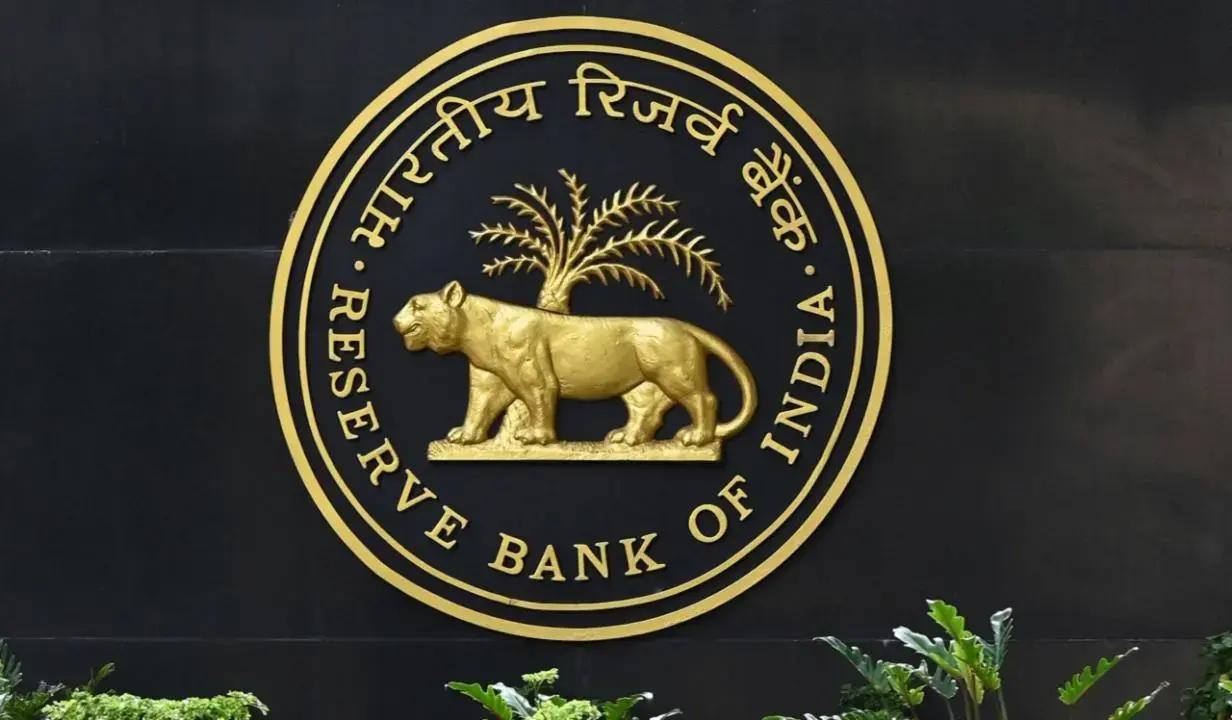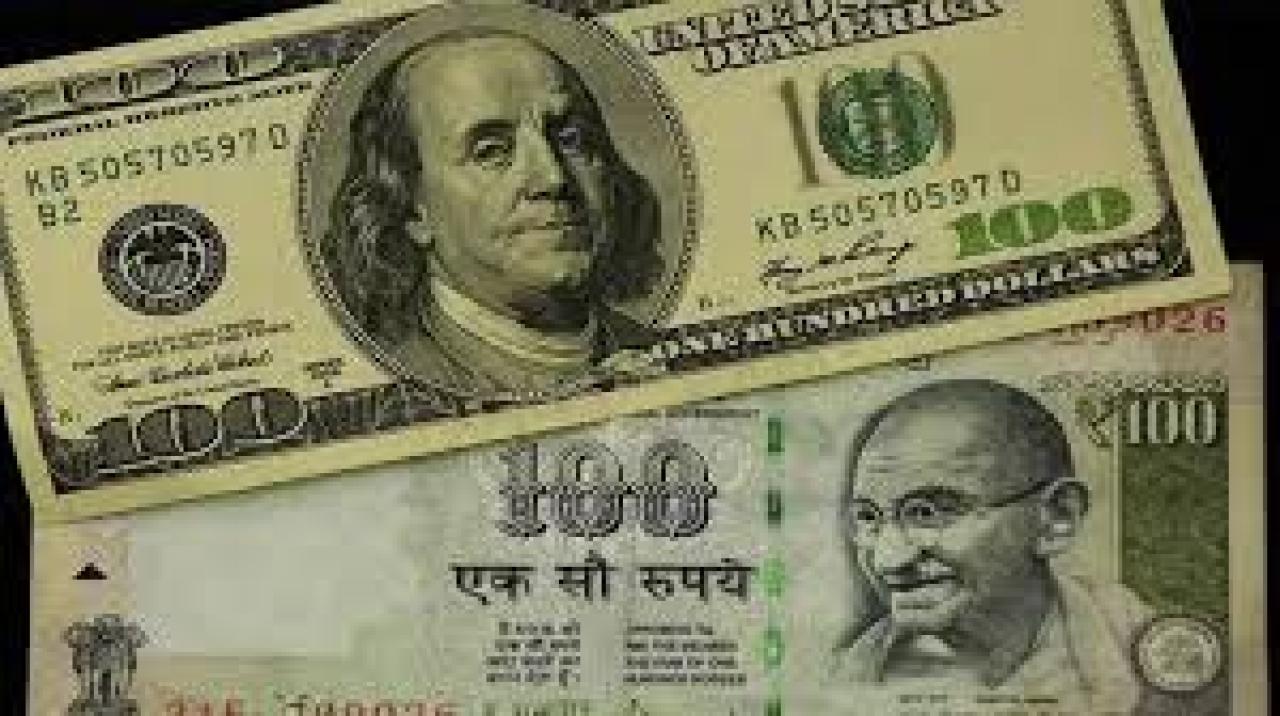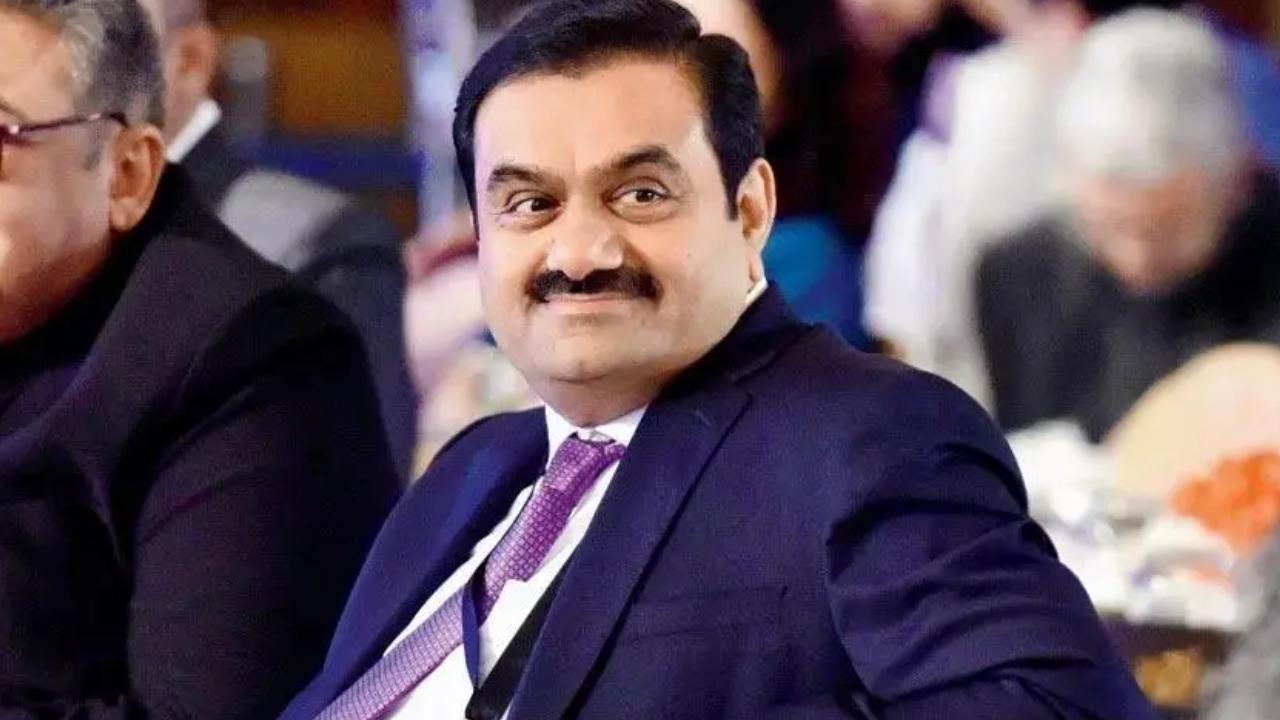Read Business News
Stock markets remain shut for Holi, trading to resume on March 17
Indian equity markets remained closed on Friday, March 14, in observance of Holi 2025, the festival of colours, which is celebrated across the country, reported ANI. The holiday marks the arrival of spring and has resulted in a pause in trading activities on the domestic stock exchanges. ANI reported that the National Stock Exchange (NSE) and the Bombay Stock Exchange (BSE) announced the closure of all market segments, including derivatives, securities lending and borrowing (SLB), equity, currency trading, and electronic gold receipts (EGR). The Holi 2025 holiday has shortened the trading week, giving market participants additional time to strategise their next moves when trading resumes on Monday, March 17. On Thursday, the Indian stock markets closed on a negative note. ANI reported that NSE Nifty ended at 22,397.20, down by 73.30 points or 0.33 per cent. Similarly, the BSE Sensex followed the downward trend and closed at 73,828.91, falling over 200 points or 0.27 per cent. According to ANI, the major gainers at the NSE on Thursday included Bharat Electronics, SBI, ICICI Bank, Cipla, and NTPC. On the other hand, the biggest losers were Shriram Finance, Tata Motors, Hero MotoCorp, IndusInd Bank, and Hindalco Industries. On the BSE, both the Midcap and Smallcap indices declined by 0.5 per cent each. Sector-wise, auto, IT, metal, media, and realty stocks traded in the red, recording losses between 0.5 to 1 per cent. However, the PSU Bank index saw a modest rise of 0.5 per cent. Market sentiment throughout the week remained mixed as investors responded to both global and domestic economic signals. ANI reports that US inflation data (CPI) came in lower than expected, providing some support to the US stock markets, which had been down by three per cent earlier. This small recovery in US markets had a positive influence on some developing markets as well. On the domestic front, Indian inflation eased due to a decline in food prices. Additionally, the Index of Industrial Production (IIP) exceeded market expectations, reflecting stronger industrial performance. Market analysts believe that as trading resumes next week, investors will closely watch global market developments and domestic economic indicators to assess the future direction of the market. The holiday break is expected to give traders time to recalibrate their strategies based on these factors. (With inputs from ANI)
14 March,2025 11:04 AM IST | Mumbai | mid-day online correspondentIndusInd Bank stock falls 23 percent to 52-week low on derivatives discrepancies
IndusInd Bank shares plunged by 23% in early trade on Tuesday, hitting a 52-week low, following the private lender's disclosure of discrepancies in its derivatives portfolio. The stock extended its losing streak for the fifth consecutive session, becoming the biggest drag on the Sensex. On the BSE, IndusInd Bank’s stock tanked 22.8%, reaching the lower circuit at ₹695.25 per share, marking its lowest level in the past year. Similarly, the stock plummeted by 21.67% on the National Stock Exchange (NSE), touching a 52-week low of ₹705.35 apiece. According to PTI reports, the sharp decline made IndusInd Bank the worst-performing stock among the 30 constituents of the BSE Sensex. The broader market was also under pressure, with the Sensex falling 255 points, or 0.34%, to 73,860.17. Meanwhile, the NSE Nifty dropped 47.65 points, or 0.21%, to 22,412.65 in early trade. The steep sell-off followed the bank’s regulatory filing on Monday, where IndusInd Bank reported that an internal review had uncovered certain discrepancies in the account balances of its derivatives portfolio. The Mumbai-based lender stated that the review was conducted in line with the Reserve Bank of India’s (RBI) directives issued in September 2023 regarding the investment portfolios of banks, specifically concerning ‘Other Asset and Other Liability’ accounts. According to the bank’s statement, the internal assessment revealed that the adverse impact of the discrepancies could be around 2.35% of the bank's net worth as of December 2024. This translates to an estimated hit of approximately ₹1,500 crore, according to market experts. Following the disclosure, IndusInd Bank held an analyst call to address concerns. The bank confirmed that an external auditor has been engaged to conduct an independent review of the matter, with the report expected to be finalised by the end of March 2024. Despite the negative development, IndusInd Bank sought to reassure investors by stating that the bank's overall profitability and capital adequacy remain healthy enough to absorb the one-time impact from the discrepancies. The stock had already faced pressure on Monday, closing nearly 4% lower after the RBI’s decision to extend the tenure of the incumbent CEO by only one year. The bank had reportedly sought a three-year extension. Market analysts believe that the combination of governance concerns, the RBI’s cautious approach on leadership tenure, and the uncertainty around the derivatives portfolio have contributed to the sharp fall in IndusInd Bank’s stock. "The discovery of discrepancies in the derivatives portfolio raises concerns about the bank's internal controls and could impact investor confidence in the short term," said a financial expert quoted by PTI. As per PTI reports, the steep fall in IndusInd Bank's stock reflects broader market nervousness, with investors remaining cautious about the potential financial and reputational fallout from the derivatives issue. The coming weeks are expected to be critical as the external auditor's report could provide further clarity on the extent of the problem and its long-term impact on the bank's financial health. IndusInd Bank’s management has assured investors that corrective measures are already being implemented to prevent such discrepancies from occurring in the future. However, market sentiment is likely to remain fragile until the final audit report is released. (With inputs from PTI)
11 March,2025 01:24 PM IST | MumbaiMarkets rebound after five-day slump as Sensex and Nifty recover
After a prolonged downturn lasting five consecutive sessions, equity benchmark indices Sensex and Nifty witnessed a rebound in early trade on Tuesday, buoyed by value buying at lower levels. The 30-share BSE Sensex climbed 117.57 points to reach 74,571.98 in initial trade, while the NSE Nifty advanced by 31.3 points to 22,584.65. As trading progressed, the Sensex further surged 272.39 points, reaching 74,725.89, and the Nifty moved up by 47.45 points to 22,600.80. Among the top gainers in the Sensex pack were Mahindra & Mahindra, Zomato, Adani Ports, Bajaj Finserv, Bajaj Finance, and Bharti Airtel. Conversely, Power Grid, Larsen & Toubro, Sun Pharma, and NTPC were among the laggards. Over the past five trading sessions, the BSE benchmark had suffered a decline of 1,542.45 points, or 2 per cent, while the Nifty dropped by 406.15 points, or 1.76 per cent, as per PTI reports. According to V K Vijayakumar, Chief Investment Strategist at Geojit Financial Services, "The market is currently oversold, large-cap valuations are reasonable, and short positions are substantial. This scenario sets the stage for a potential rebound, particularly if short-covering takes place. However, the core concern remains the unrelenting selling pressure from foreign institutional investors (FIIs) in the cash market." He further stated that domestic institutional investors (DIIs) have played a crucial role in preventing a deeper downturn, despite sustained FII selling. "The uncertainty surrounding Trump tariffs will continue to weigh on global markets," he added. Exchange data reveals that FIIs offloaded equities worth Rs 6,286.70 crore on Monday, while DIIs absorbed Rs 5,185.65 crore in domestic equities, mitigating some of the downward pressure. Prashanth Tapse, Senior Vice President (Research) at Mehta Equities Ltd, expressed concerns over the magnitude of FII selling. "With FIIs having sold over Rs 6,000 crore worth of Indian equities on Monday alone and offloading more than Rs 1 lakh crore since the beginning of this year, there is growing apprehension about how long domestic inflows can continue to offset overseas investor exits," he stated. In the broader Asian markets, indices in Seoul, Tokyo, Shanghai, and Hong Kong were trading lower, following weak global cues. Meanwhile, US markets closed mostly in negative territory on Monday. On the commodities front, the global oil benchmark Brent crude registered a 0.51 per cent rise, trading at USD 75.16 per barrel, as per PTI reports. Monday’s session saw the Sensex plummeting by 856.65 points, or 1.14 per cent, to close at 74,454.41, while the Nifty recorded a steep decline of 242.55 points, or 1.06 per cent, to settle at 22,553.35, highlighting the volatility in the markets over the past week. (With inputs from PTI)
25 February,2025 11:00 AM IST | MumbaiIndia can certainly achieve over 7 percent growth, says RBI Governor Malhotra
Reserve Bank of India (RBI) Governor Sanjay Malhotra expressed confidence in India's economic potential, stating that the country can certainly achieve a growth rate of over 7 per cent. Speaking at the post-Monetary Policy Committee (MPC) press conference on Friday, Malhotra emphasised that this should be the target India aspires to. "These are difficult questions to answer, but nevertheless, I would like to stick my neck out and say that certainly India can achieve a 7 per cent plus growth rate, and we should certainly aspire for it," the RBI Governor said when asked about the feasibility of attaining such a growth rate. According to ANI, the government’s Economic Survey has projected India's growth rate for the upcoming fiscal year 2025-26 to be in the range of 6.3 to 6.8 per cent. Meanwhile, the RBI has forecasted a growth rate of 6.7 per cent for the same period. When questioned about the balance between growth and inflation, Malhotra stated that managing inflation and ensuring price stability remain the primary objectives for India, while also keeping economic growth in view. "So we will continuously focus on that, trying to meet these objectives. We will try to align the inflation with the target that has been given to us," he said, as per ANI reports. The Governor further noted that the time had come for the RBI to adopt a more supportive stance towards economic growth, given that inflation is showing signs of moderation. "Inflation is expected to decline further, and we will maintain a neutral stance so that we can proactively respond to evolving macroeconomic conditions," Malhotra stated. In response to a query on whether the RBI aims to maintain inflation within the 2-6 per cent band or at the ideal 4 per cent mark, Malhotra remarked, "In RBI, we like to be on top of everything," suggesting that the central bank is working towards aligning inflation with the 4 per cent target. On the inflation outlook, the central bank anticipates Consumer Price Index (CPI) inflation to ease to 4.8 per cent in 2024-25, with Q4 inflation projected at 4.4 per cent. Looking ahead to 2025-26, inflation is forecasted to be at 4.2 per cent, with quarterly estimates of Q1 at 4.5 per cent, Q2 at 4.0 per cent, Q3 at 3.8 per cent, and Q4 at 4.2 per cent. As per ANI, announcing key takeaways from the recent RBI MPC decisions, Malhotra pointed out that inflation has declined, supported by a favourable outlook on food prices and the continued impact of previous monetary policy measures. He further stated that inflation is expected to moderate further in 2025-26, aligning gradually with the RBI’s target. Malhotra also highlighted that food inflation pressures are expected to ease significantly, thanks to a promising rabi crop, which would contribute to a stable inflation outlook. According to ANI, in his first Monetary Policy announcement since assuming office as RBI Governor, Malhotra and the committee unanimously decided to reduce the policy rate by 25 basis points (bps), bringing it down from 6.5 per cent to 6.25 per cent. This marks the first such rate cut in nearly five years, reflecting the RBI's strategic shift towards fostering economic growth while maintaining inflation control.
07 February,2025 02:38 PM IST | New DelhiRBI forecasts 4.2 percent inflation for FY26, a decline from FY25 estimate
The Reserve Bank of India (RBI) has projected retail inflation for the 2025-26 financial year at 4.2%, a decrease from its earlier estimate of 4.8% for 2024-25, as it unveiled the last bi-monthly monetary policy review of the fiscal year. RBI Governor Sanjay Malhotra shared the inflation projections, stating that food inflation would soften considerably due to favourable conditions, including good kharif crop production, lower vegetable prices, and positive prospects for the rabi crop. He further highlighted that core inflation is expected to rise but will remain relatively moderate during the coming months. However, Malhotra warned that continued uncertainty in global financial markets, volatility in energy prices, and adverse weather events could introduce upside risks to inflation, adding pressure to the country's inflation trajectory. While retaining the 4.8% inflation forecast for FY24-25, with a specific projection of 4.4% for Q4, the RBI Governor stated that inflation in FY26 could soften further, with projections set at 4.2% for the year, broken down as follows: Q1 at 4.5%, Q2 at 4%, Q3 at 3.8%, and Q4 at 4.2%. Malhotra assured that the risks to these projections are evenly balanced. In its previous policy review, the RBI had anticipated an inflation rate of 4.8% for 2024-25, with the third quarter forecasted at 5.7% and the final quarter at 4.5%. Projections for Q1 of 2025-26 had indicated an inflation of 4.6%, while Q2 was expected at 4%. As per the latest data, the Consumer Price Index (CPI)-based inflation dropped to a four-month low of 5.22% in December 2024, primarily due to the easing of food prices, particularly vegetables. This marked a decrease from 5.48% in November 2024. Inflation had climbed to 6.2% in October 2024, following an increase from 3.6% in July-August to 5.5% in September. The Economic Survey presented in Parliament last week underlined the need for India to develop climate-resilient crop varieties and improve yields in essential crops like pulses, oilseeds, tomatoes, and onions to ensure long-term price stability. The Survey also indicated that vegetables and pulses contributed significantly to food inflation, accounting for 32.3% of inflation between April and December 2024. (With inputs from PTI)
07 February,2025 11:18 AM IST | MumbaiReduced repo rates to keep residential momentum going, Anuj Puri highlights
In a move that is expected to provide significant support to the housing sector, the Reserve Bank of India (RBI) has announced a reduction in the repo rate by 25 basis points. According to Anuj Puri, Chairman of ANAROCK Group, this decision, combined with recent taxation benefits introduced in the Union Budget, will undoubtedly boost homebuyers, particularly those in the affordable housing segment. The reduction in repo rates comes at a crucial time when many first-time homebuyers had been hesitant to make the leap into home ownership. The lowering of home loan rates offers these potential buyers a timely opportunity to secure financing on more favourable terms. As long as banks pass on the rate cut to borrowers, this move is expected to encourage more activity in the residential real estate market. This rate reduction aligns well with ongoing positive trends in the housing sector, which has been experiencing strong momentum in recent times. With home loan rates now more affordable, there is hope that consumer sentiment will remain positive. Furthermore, the rate cut could provide some relief amidst the rising property prices that have been seen in the top seven cities over the last year. As per ANAROCK Research, housing prices have surged significantly in 2024, with an increase of 13-30% across these cities. Notably, the National Capital Region (NCR) recorded the highest rise at 30%. At the close of 2023, the average housing price in the top seven cities stood at approximately INR 7,080 per square foot. By the end of 2024, this figure had climbed to around INR 8,590 per square foot, marking an overall annual increase of 21%. For commercial real estate, particularly office spaces, the repo rate cut also holds potential benefits. Lower borrowing costs can make it more affordable for businesses to invest in commercial properties. Additionally, real estate investment trusts (REITs), which offer investors stable returns, may become more attractive in this lower interest rate environment. However, while the rate cut is a positive development for the housing market, its effectiveness could be tempered by rising property prices and ongoing inflationary pressures. It remains to be seen whether banks will pass on the full benefits of this rate reduction to borrowers in a timely manner, as this will play a crucial role in determining its success. In conclusion, the RBI's decision to reduce the repo rate is an encouraging step for homebuyers and the housing market as a whole, but the full impact will depend on whether banks offer the benefits to consumers and how inflationary trends develop.
07 February,2025 10:54 AM IST | MumbaiNifty, Sensex end flat on Budget day; FMCG and realty stocks rally
The Indian stock markets witnessed a highly volatile session on Budget day, with the benchmark indices closing nearly unchanged despite fluctuations during the Union Budget speech by the Finance Minister, according to ANI. As per ANI reports, the Nifty 50 index ended the trading day at 23,482.15, slipping by 26.25 points (-0.11 per cent), while the BSE Sensex closed at 77,505.96, marking a marginal gain of 5.39 points (+0.01 per cent). The market movement reflected mixed sentiments, as investors reacted to key Budget announcements impacting various sectors. Analysts noted that the Budget's emphasis on consumption-led growth sparked strong buying interest in certain segments. The Fast-Moving Consumer Goods (FMCG) and Realty sectors, in particular, surged by over 3 per cent on the National Stock Exchange, indicating a positive response from investors. However, selling pressure was observed in IT, metals, banking, and pharmaceutical stocks towards the close of the session. Commenting on the Budget's influence on the markets, Akshay Chinchalkar, Head of Research at Axis Securities, stated, "It is a consumption-driven Budget, and this is clearly reflected in the strength of the FMCG sector. The personal tax reliefs announced will result in higher disposable income for the middle class, potentially boosting spending. However, the revenue loss from these tax benefits will need to be offset, which could be contributing to the market’s volatility." As per ANI reports, out of the Nifty 50 stocks, 22 ended in positive territory, whereas 30 registered losses. Providing a broader perspective, Nilesh Shah, Managing Director of Kotak Mahindra Asset Management Company, remarked, "This Budget aligns with the Triveni Sangam expectations by increasing capital expenditure (CapEx), driving consumption, and managing the fiscal deficit effectively. These were the three critical elements the market was keenly watching. While there may be a shift in investment preferences from infrastructure and CapEx towards consumption-driven stocks in the short term, long-term investors should continue focusing on infrastructure and investment-oriented sectors." Despite the flat closing, market experts believe that the Budget's focus on consumption and fiscal prudence could provide a foundation for sustained economic growth in the long run. However, investor strategies will play a crucial role in determining how portfolios balance between consumption-led sectors and long-term investment avenues. According to ANI, analysts anticipate further market movements in the coming days as investors digest the Budget’s implications and adjust their positions accordingly.
01 February,2025 04:39 PM IST | MumbaiRupee falls 14p to 86.59 against dollar
The rupee pared initial gains and settled for the day lower by 14 paise to 86.59 (provisional) against US dollar on Tuesday, tracking heavy sell-off in the domestic equity market and a recovery in the US dollar index. Forex traders said the dollar weakened from its 109 levels but clawed back to 108.66 as Donald Trump declared tariffs against Canada and Mexico in the near future but stopped short of declaring any tariffs against China. At the interbank foreign exchange, the rupee opened on a positive note at 86.28 against the greenback. During the day, the local unit touched an intraday high of 86.28 and a low of 86.59. It finally closed at 86.59 (provisional). This story has been sourced from a third party syndicated feed, agencies. Mid-day accepts no responsibility or liability for its dependability, trustworthiness, reliability and data of the text. Mid-day management/mid-day.com reserves the sole right to alter, delete or remove (without notice) the content in its absolute discretion for any reason whatsoever
22 January,2025 08:13 AM IST | Mumbai | AgenciesIndia's forex reserves steadily declines, kitty now stands 10 percent below peak
India's foreign exchange reserves have been steadily declining for three months, ANI reported. In the week that ended December 27, the country's foreign exchange kitty declined by USD 4.112 billion to USD 640.279 billion ,as per RBI data, ANI cited. India's forex reserves have slumped twelve out of the thirteen weeks, reaching a new multi-month low. The reserves had been declining since they reached an all-time high of USD 704.89 billion in September. They are now approximately 10 percent lower than their peak. The reserves have been falling, most likely as a result of RBI intervention aimed at forcefully preventing the rupee from depreciating sharply, ANI reported. As per recent RBI data, India's foreign currency assets (FCA), which make up the majority of FX reserves, were worth USD 551.921 billion. Gold reserves currently total USD 66.268 billion, according to RBI data, ANI cited. According to estimates, India's foreign exchange reserves are sufficient to fund around a year's worth of projected imports. In 2023, India gained around USD 58 billion to its foreign exchange reserves, compared to a cumulative decline of USD 71 billion in 2022, ANI reported. In 2024, the reserves increased by a bit more than USD 20 billion. Without the recent fall, the reserves would have been far larger. Foreign exchange reserves (FX reserves) are assets kept by a country's central bank or monetary authority, principally in reserve currencies such as the US dollar, with smaller amounts in the Euro, Japanese Yen, and Pound Sterling. The RBI closely monitors foreign exchange markets, acting only to maintain orderly market conditions and reduce excessive volatility in the rupee exchange rate, without setting a specific target level or range, ANI reported. To prevent the rupee from depreciating sharply, the RBI frequently intervenes by managing liquidity, including selling dollars. A decade ago, the Indian rupee was one of the most volatile currencies in Asia. Since then, it has become one of the most stable currencies. The RBI has carefully purchased dollars when the rupee is strong and sold them when it falls, increasing the attraction of Indian assets to investors, ANI reported. (With ANI inputs)
05 January,2025 04:48 PM IST | New Delhi | mid-day online correspondentSensex drops 400 pts after briefly hitting 80k, Nifty around 24,100
The Indian stock markets opened nearly flat on Friday, continuing their movement towards the positive, as other Asian markets showed signs of strength. The Nifty 50 index opened at 24,196.40 points, registering a modest gain of 7.75 points or 0.03 per cent, while the Sensex opened at 80,072.99 points, up by 129.28 points or 0.16 per cent. Market analysts have pointed out that the rally on Thursday was largely driven by Foreign Institutional Investors (FIIs) buying into the market. However, with the current macroeconomic conditions, particularly a strengthening US dollar, sustaining such FIIs' investments could prove challenging. Experts suggest that the markets are likely to experience moderate movement until major corporate earnings reports are released. "The market's ability to surprise was evident in yesterday's unexpected rally of 445 points in the Nifty. Large-cap stocks outperforming small-cap stocks is a positive signal that may persist. However, it’s still too early to ascertain whether FIIs will continue their buying spree. With the dollar index at 109.25 and the US 10-year yield at 4.56 per cent, the broader macroeconomic situation does not favour sustained FII investments. A rise in deposit growth could bode well for banking stocks, which are currently well-priced," said V K Vijayakumar, Chief Investment Strategist at Geojit Financial Services. Sector-wise, Nifty Media led the gains with a 1.4 per cent rise, while shares in the Auto, IT, and Healthcare sectors came under pressure. Overall, other sectors registered positive movements. At the time of reporting, 29 of the Nifty 50 stocks had opened with gains, while 21 stocks were in the red. ONGC, HCLTech, SBI, Trent, and Mahindra & Mahindra were among the top gainers, whereas Hero MotoCorp, Infosys, TCS, Asian Paints, and Wipro were the leading losers. "Nifty had its best performance since November 22 and managed to close above the November 19 gap-down level of 24,150, which was a significant boost for tactical bulls. The break of the 200-day average in mid-December turned out to be a bear trap. That said, sustained momentum will be crucial, with immediate resistance at 24,250 and critical resistance at 24,306. On the downside, supports are at 24,000, with an extension at 23,830. Historically, Friday has been the best day of the week for the Nifty, with a 60 per cent win-rate and an average gain of 0.2 per cent," said Akshay Chinchalkar, Head of Research at Axis Securities. Meanwhile, in other Asian markets, Japan’s market remained closed for the New Year holiday, but other regional markets saw positive movement. Hong Kong's Hang Seng index surged by more than 1 per cent, Taiwan’s Weighted index gained 0.96 per cent, South Korea’s KOSPI rose by 2 per cent, while China’s Shanghai Composite index showed a decline at the time of reporting. (With inputs from ANI)
03 January,2025 10:03 AM IST | MumbaiAdani to exit Adani Wilmar, raise over USD 2 billion
Billionaire Gautam Adani's group on Monday announced its exit from FMCG joint venture Adani Wilmar by selling its entire stake to the Singaporean partner and in the open market for an estimated over USD 2 billion. In a statement, Adani Enterprises Ltd said it will sell a 31.06 per cent stake to Wilmar International. Another 13 per cent will be sold in the open market to meet minimum public shareholding requirements. It, however, did not give the price at which it was selling the stake. "With this, AEL will fully exit Adani Wilmar Ltd," it said. "Adani's nominee directors will step down from the board of Adani Wilmar Ltd." The transaction is likely to conclude before March 31, 2025. This story has been sourced from a third party syndicated feed, agencies. Mid-day accepts no responsibility or liability for its dependability, trustworthiness, reliability and data of the text. Mid-day management/mid-day.com reserves the sole right to alter, delete or remove (without notice) the content in its absolute discretion for any reason whatsoever
30 December,2024 04:11 PM IST | New Delhi | PTI













